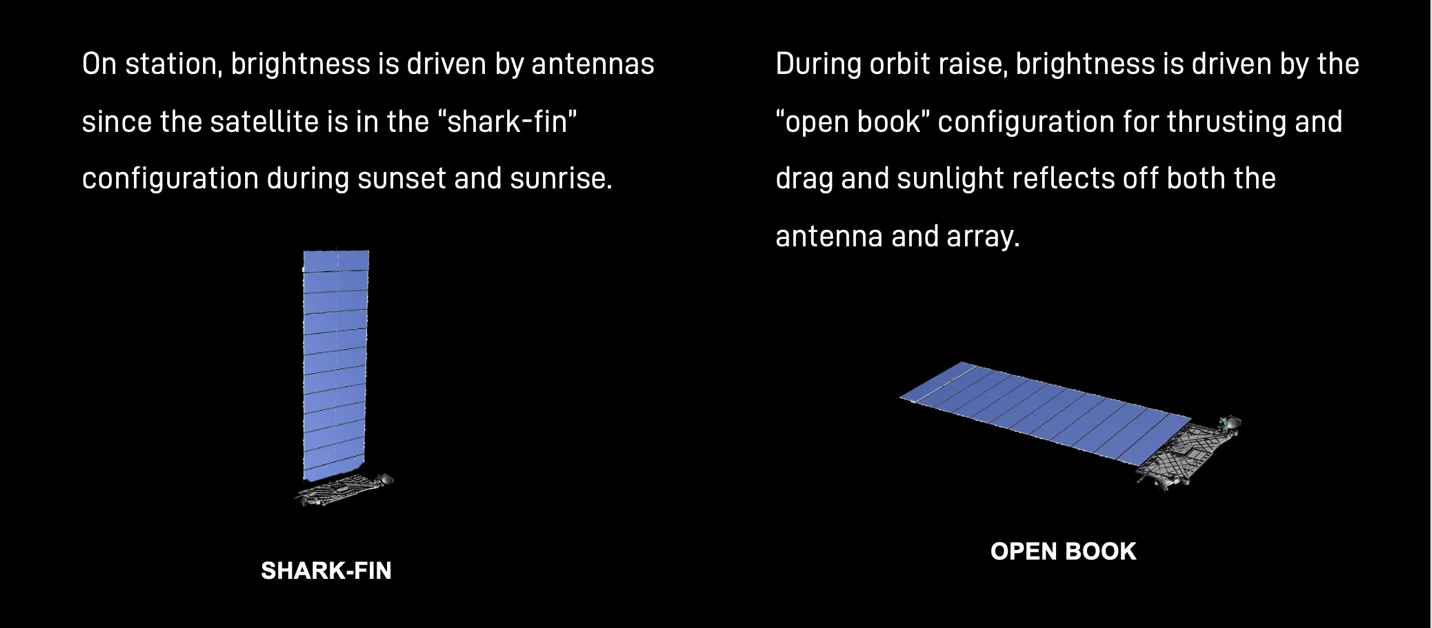SpaceX has announced that it will mount a sun visor on each of its Starlink satellites and have them perform controlled maneuvers, to make them less visible to members of the astronomy community making detailed observations of the night sky. SpaceX has already launched over 400 satellites to bolster a constellation that could one day provide global broadband internet access.
The proliferation of satellite technology and the increasing affordability of reaching low-Earth orbit (LEO) has led many – particularly those in the science community – to raise concerns about the impact that space traffic may have on the night sky. This issue has only grown more contentious with the advent of the megaconstellation, which is the term used to describe vast swarms of satellites working as a network as they fly choreographed orbits through LEO space.
SpaceX's Starlink megaconstellation is well underway to becoming a reality, and could one day provide high-speed, low latency satellite-based broadband on a global scale.
Naturally, having swarms of bright satellites photobombing long-exposure telescope observations is less than ideal. A recent study published in the journal Astronomy and Astrophysics suggests that the introduction of thousands of new megaconstellation satellites could have a significant detrimental effect on ground-based observations of the heavens.

In a previous Starlink launch, SpaceX deployed a satellite replete with a dark coating as part of an experiment geared towards lowering the light-footprint of its satellites. According to the company, the trial successfully reduced the brightness of the satellite by around 55 percent. However, by darkening the body of the satellite, they also made it more likely that the probe could overheat, and fail.
This week, SpaceX announced a new set of measures that it's taking to mitigate the light pollution risk posed by its swarm.
During orbit raising, and while the satellites are in their parking orbit prior to reaching their operational orbits, the solar array is the main source of light pollution. This is because the satellite is in what SpaceX calls an "open book" configuration, wherein the array is laid out flat in front of the spacecraft relative to Earth’s surface in order to reduce atmospheric drag. During this phase, sunlight reflects off both the body of the spacecraft and its solar array, making it visible from Earth.
SpaceX is currently exploring the potential of rolling the satellites as they make their way to their operational orbit, in order to keep the solar array edge-on to the Sun. This would prevent light glinting off of the panel like an enormous mirror, but the technique has its own set of issues that would prevent it from being employed all the time.
Having a solar array edge-on to the Sun would limit the amount of light that it could collect and convert to energy. Furthermore, rolling the spacecraft to maintain this orientation would decrease the amount of time that ground stations could stay in contact with the spacecraft, as the antenna would periodically point away from Earth.

There would also be times where the two side-mounted star-tracking cameras are pointed directly at the Earth and the Sun. During these periods it would be challenging to keep an accurate read on a spacecraft's orbital altitude.
When Starlink satellites reach their operational orbit, their solar arrays are re positioned into a "shark-fin" configuration, with the panel above the spacecraft. At this point the main cause of light pollution is the white antennae that the spacecraft use to communicate with ground stations and relay data.
Rather than darkening the antennae, SpaceX has opted to attach visors to its satellites that would prevent light from reaching the reflective surfaces and the white phased-array antennas. During launch, the sun visor would lay flat against the body of the probe, and would deploy soon after the cluster is ejected from its Falcon 9 upper stage.
If executed well, the technique has the potential to significantly darken the satellites, and avoid the overheating issue.
The first satellite to be fitted with a sun visor is set to launch in May, and the company has stated that all future satellites launched from June onward will boast sun visors.
Source: SpaceX







